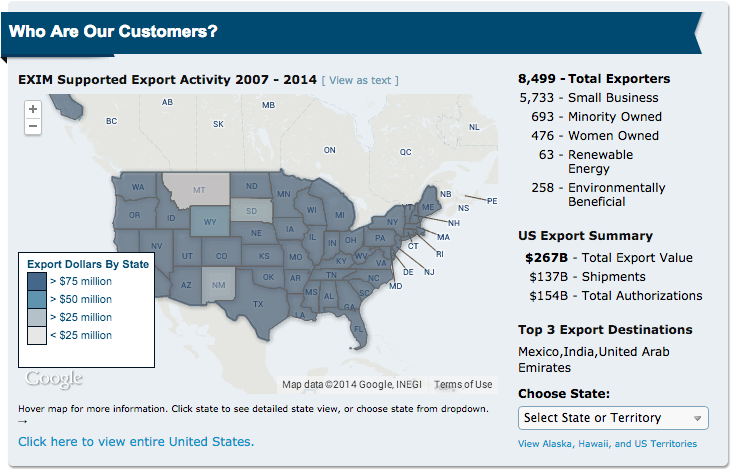It’s the “Life of Julia: Corporate Welfare Edition.” Defenders of the Export-Import Bank have found a new approach to promoting its existence – just tie opposition to the government financier to the “war on women” narrative.
The U.S. Chamber of Commerce, the foremost lobbying force for Ex-Im, recently posted an article on how crucial the bank is to women-owned businesses. Citing the chamber’s own research on women entrepreneurs, writers Stefanie Holland and Roberta Phillips note that “women-owned firms have grown at one-and-a-half times the rate of other small enterprises in the last 15 years and now account for nearly 30 percent of all new businesses.”
Holland and Phillips, directors of the chamber’s International Policy division and Center for Women in Business, respectively, also cite the Small Business Administration’s assertion that the main problem for small businesses, “especially women- and minority-owned businesses” is a lack of access to capital.
Clearly, the only solution is government aid.
“Ex-Im provides loans, loan guarantees, and export credit insurance to help cover financing gaps for American exporters,” the chamber wrote. “Last year the Bank provided financing or loan guarantees for $34.7 billion in U.S. exports and supported more than 200,000 American jobs.”
And the chamber is happy to note that “nearly 90 percent of Ex-Im’s transactions support the exports of small and medium-size businesses.”
Even more importantly, the chamber wrote, “one in five of the Bank’s authorizations supported women- and minority-owned businesses.”
Sounds great, doesn’t it? Except that women own nearly 30 percent of businesses in the U.S. Among businesses with employees — which is probably a fairer comparison —women own about 12 percent and minorities own about 13 percent. At best, Ex-Im subsidizes women and minority-owned in their rough proportion to the business population.
Moreover, the thousands of Ex-Im subsidies for small businesses are much smaller than its hundreds of big business deals. Measured by dollar amount, Ex-Im dedicates more than 80 percent of its financing to big businesses, with more than 50 percent going to just five recipients. This implies that as little as five percent of all Ex-Im financing – again, measured by dollar amount – goes to subsidize women- and minority-owned businesses.
This woman-and-minority counting also highlights one of the major problems of corporate welfare: political favoritism. When the market allocates capital, it allocates it according to what seems most economic promising. The result is optimal economic growth. When politicians allocate capital, they do it according to political considerations – such as choosing a class of business owners because they provide a checkmark to boost the bank’s advocacy statistics.
In attempting to make Ex-Im a women’s issue, the chamber is feeding perfectly into the Democrats’ 2014 “war on women” campaign playbook.
For instance, endangered Democratic Sens. Kay Hagan of North Carolina and Mark Udall of Colorado both support reauthorizing Ex-Im. Their Republican opponents, Thom Tillis and Cory Gardner, oppose Ex-Im. These Democrats can now parrot the chamber and add Ex-Im opposition to the list of “anti-woman policies.”
A representative for Ex-Im did not provide the Washington Examiner with an on-the-record comment.
UPDATE: Ex-Im has added a graphic to their homepage breaking down the number of women- and minority-owned businesses. Counting only small businesses (because corporations are owned by shareholders), women own 8 percent of the businesses receiving Ex-Im assistance, while minorities own 12 percent.
This implies that, at most, 20 percent of Ex-Im assistance goes to women- and minority-owned businesses, since some women are also minorities.


